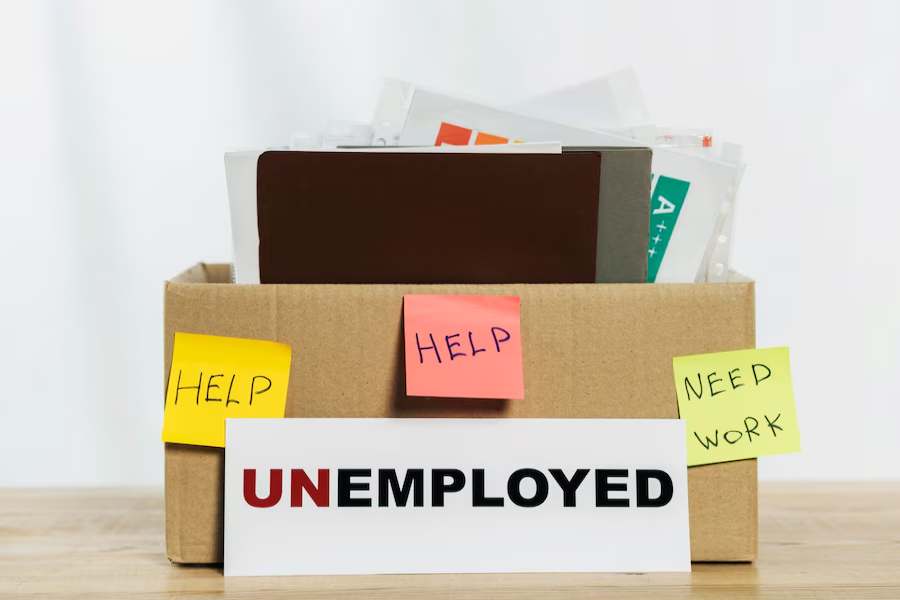
Unemployment represents far more than a temporary setback for individuals seeking work. It constitutes a significant social challenge with ripple effects extending throughout communities, economies, and national well-being. When unemployment rates rise, societies face complex challenges that can fundamentally alter their social fabric and economic stability. These alterations extend to a wide range of effects that not only effect societies, but can also make economies collapse altogether in the long run.
The Economic Impact of Widespread Joblessness
When unemployment rises, purchasing power diminishes across affected communities. The U.S. Bureau of Economic Analysis estimates that for every percentage point increase in unemployment, there’s approximately a $250 billion reduction in national economic output. This contraction affects not only the unemployed but creates a negative multiplier effect throughout the economy.
According to Shapiro Law Group, an Employment lawyer in Boston, MA, prolonged unemployment often leads to a significant rise in workplace discrimination and wrongful termination claims when companies downsize. This indicates how unemployment pressures can compromise workplace ethics and proper employment practices during economic downturns.
The financial system itself becomes vulnerable during high unemployment periods. Consumer defaults rise, housing markets destabilize, and financial institutions face heightened risk. Following the 2008 financial crisis, regions with unemployment exceeding 10% experienced mortgage default rates nearly triple the national average, demonstrating how joblessness directly impacts financial stability.
The Social Decay of High-Unemployment Communities
Communities struggling with persistent unemployment often experience deterioration in social cohesion and public services. Research from the Urban Institute shows that neighborhoods with unemployment rates above 12% experience crime rates approximately 25% higher than communities with full employment. This correlation between joblessness and crime creates environments where economic opportunity becomes even scarcer.
Mental health challenges increase dramatically among the unemployed population. Studies from the American Psychological Association indicate individuals experiencing long-term unemployment are three times more likely to report symptoms of severe psychological distress compared to their employed counterparts. This mental health burden creates additional societal costs through increased healthcare demands and reduced productivity.
Family stability suffers significantly under unemployment pressure. Census data indicates divorce rates increase by approximately 11% in communities experiencing sudden unemployment spikes. Children in households affected by unemployment show measurable reductions in academic performance, with standardized test scores dropping an average of 5-7 percentile points following parental job loss.
Generational Consequences of Persistent Unemployment
Perhaps most concerning are the long-term, generational effects of unemployment. Young adults entering the workforce during high unemployment periods experience what economists call “wage scarring” – reduced earning potential that persists throughout their careers. The Economic Policy Institute estimates individuals starting careers during recessions earn approximately 10% less over their lifetimes compared to those entering during economic expansions.
Career progression itself becomes disrupted, as skills atrophy and professional networks diminish during periods of unemployment. A study by the Federal Reserve Bank of Boston found that for every six months of unemployment, the probability of securing comparable employment decreases by nearly 20%. This creates a troubling cycle where long-term unemployment becomes increasingly difficult to escape.
Public Health Implications of Joblessness
The public health consequences of unemployment extend beyond mental health challenges. Physical health deteriorates as access to healthcare becomes compromised. Research published in the American Journal of Public Health shows that a 1% increase in the unemployment rate correlates with approximately 47,000 additional deaths from cardiovascular disease and stress-related conditions nationwide.
Substance abuse rates climb in communities with persistent unemployment. The Substance Abuse and Mental Health Services Administration data indicates communities with unemployment exceeding the national average by 5 percentage points experience nearly double the rates of problematic substance use, creating additional social costs and challenges.
Policy Approaches to Address Unemployment’s Social Costs
Addressing unemployment requires comprehensive policy approaches that recognize its multifaceted impact on society. Effective unemployment programs must extend beyond simple financial assistance to include skills retraining, mental health support, and community investment strategies. Areas implementing comprehensive unemployment response programs have demonstrated the ability to reduce the social costs of unemployment by up to 40%.
Business development initiatives targeting high-unemployment regions show particular promise. Communities implementing targeted economic development programs have achieved unemployment reductions at twice the rate of areas relying solely on traditional unemployment benefits.
The true menace of unemployment lies in its comprehensive damage to social systems, far beyond the immediate financial strain experienced by jobless individuals. By recognizing unemployment as a systemic threat requiring coordinated response, societies can develop more effective interventions that preserve community well-being even during economic downturns. When we allow unemployment to persist, we accept preventable decay in our social fabric and economic potential.





